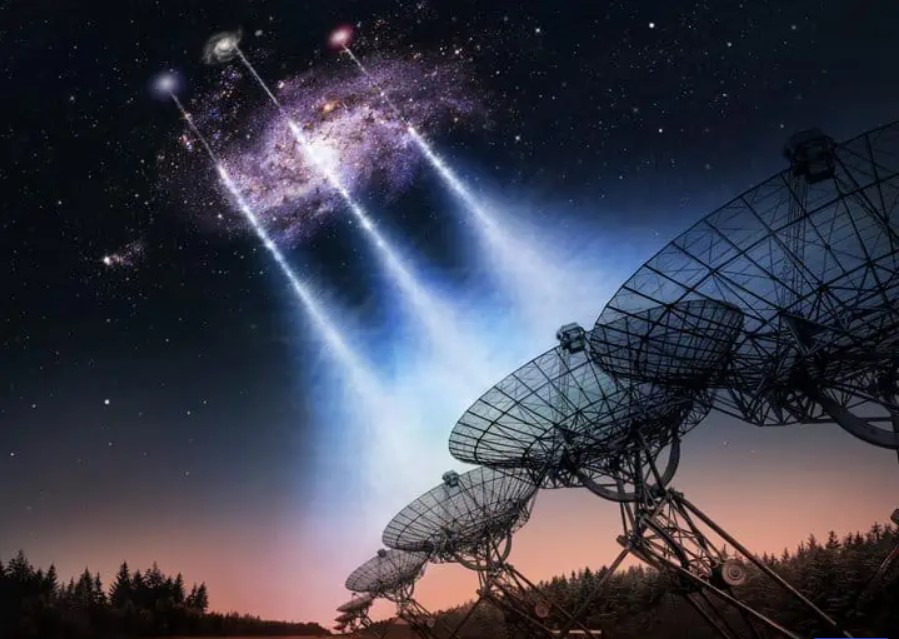Fast Radio Bursts (FRBs) are cosmic mysteries that are slowly but surely revealing their secrets. These bright flashes of light are visible in the radio wave part of the spectrum and usually last only a few milliseconds before fading away forever. They come from random locations across the Universe and are so powerful that we can see them emanating from billions of light-years away.
Astronomers have used a newly upgraded radio telescope array to find five new FRBs and discovered that multiple bursts pierced right through the Triangulum Galaxy (M33). These brief flashes lit up the gas inside M33, allowing astronomers to calculate the maximum number of otherwise invisible atoms.
The radio telescope array at Westerbork, The Netherlands has been in operation since 1968 but has recently been upgraded with the Apertif Radio Transient System (ARTS), which includes new receivers and a new supercomputer. The ARTS system was specially designed by the scientists and engineers who work with ASTRON, the Netherlands Institute for Radio Astronomy.
Scientists say the new data and images are much sharper than previously possible. That allowed the multiple bursts that punched through the nearby Triangulum Galaxy to immediately pinpointed.
“We now have an instrument with both a very wide field of view and very sharp vision,” said principal investigator Joeri van Leeuwen from ASTRON. “And all this live. That is new and exciting.”
FRBs are among the brightest explosions in the universe. The bursts contain immense amounts of energy, approximately ten trillion times the annual energy consumption of the entire world population, according to ASTRON. While some FRBs are believed to be caused by neutron stars and black holes, others continue to defy classification. Because of this, other theories persist, ranging from pulsars and magnetars, and even extraterrestrial communications.
By investigating the flashes, astronomers hope to better understand the fundamental properties of the matter that makes up the universe. But studying these flashes is difficult. No one knows where in the sky the next burst will go off, and they only last a millisecond.

Previously, radio telescopes could only roughly indicate where an FRB occurred. But the ARTS upgrades now enables Westerbork to determine the exact location of an FRB very accurately.
“We demonstrated that three of the FRBs we discovered had skewered our neighbour, the Triangulum Galaxy!” said Van Leeuwen. “We were thus able to count how many invisible electrons that galaxy contains at most, for the first time. A fantastic result.”
At 3 million light years away from Earth, the Triangulum Galaxy — also known as M33 — is the third largest galaxy in our Local Group.
In their initial commissioning phase for the upgraded telescope, they found they could expect to detect a new FRB approximately once every seven days, which they said ensures a considerable number of new sources to study.
“The combination of detection rate and localization accuracy …thus marks a new phase in which a growing number of bursts can be used to probe our Universe,” the team wrote.
By continuing to pinpoint the sources and study FRBs, astronomers hope to not only learn more about the radio bursts, but also about the mysterious dark matter and dark energy that makes up about 95% of the Universe.

